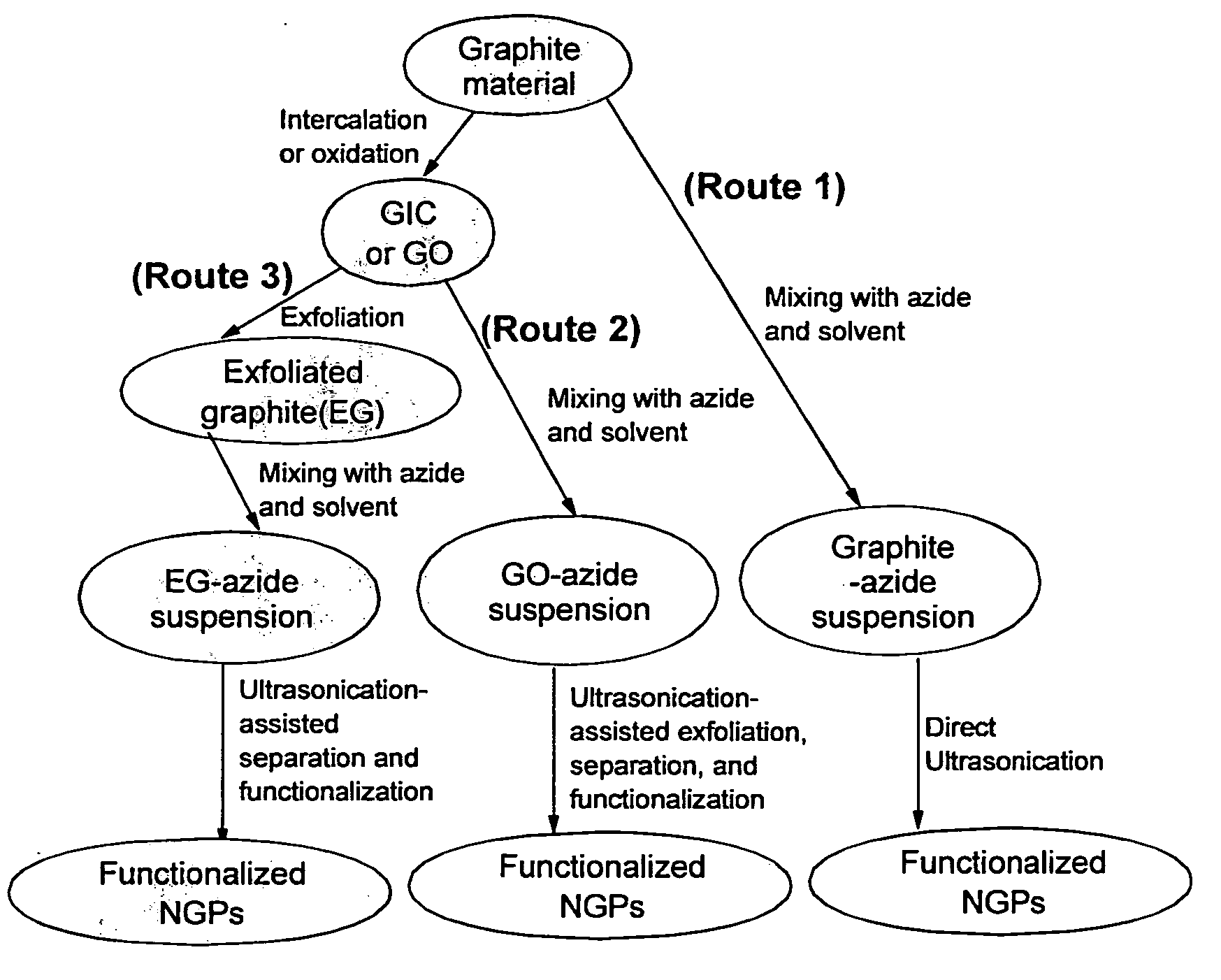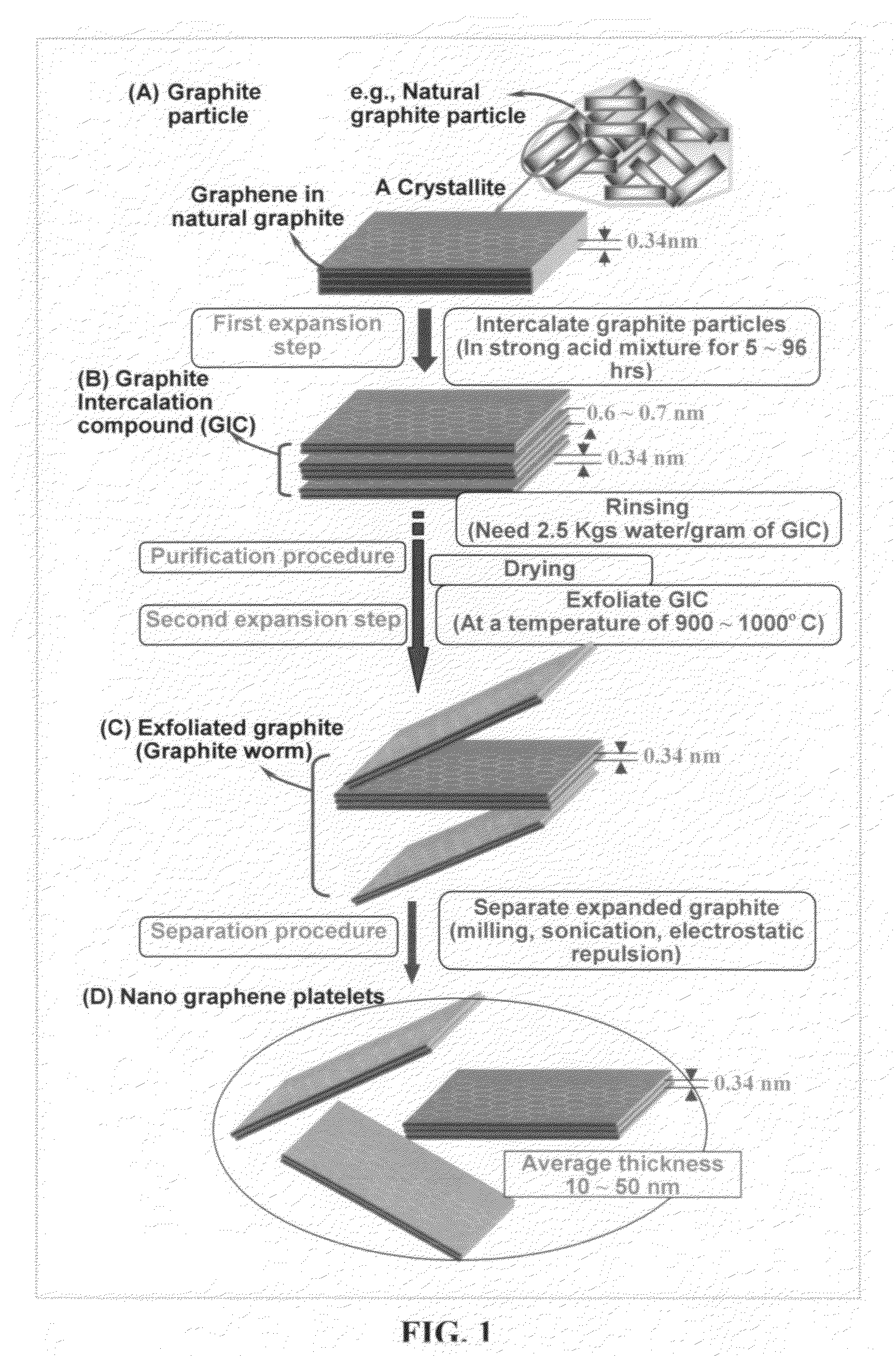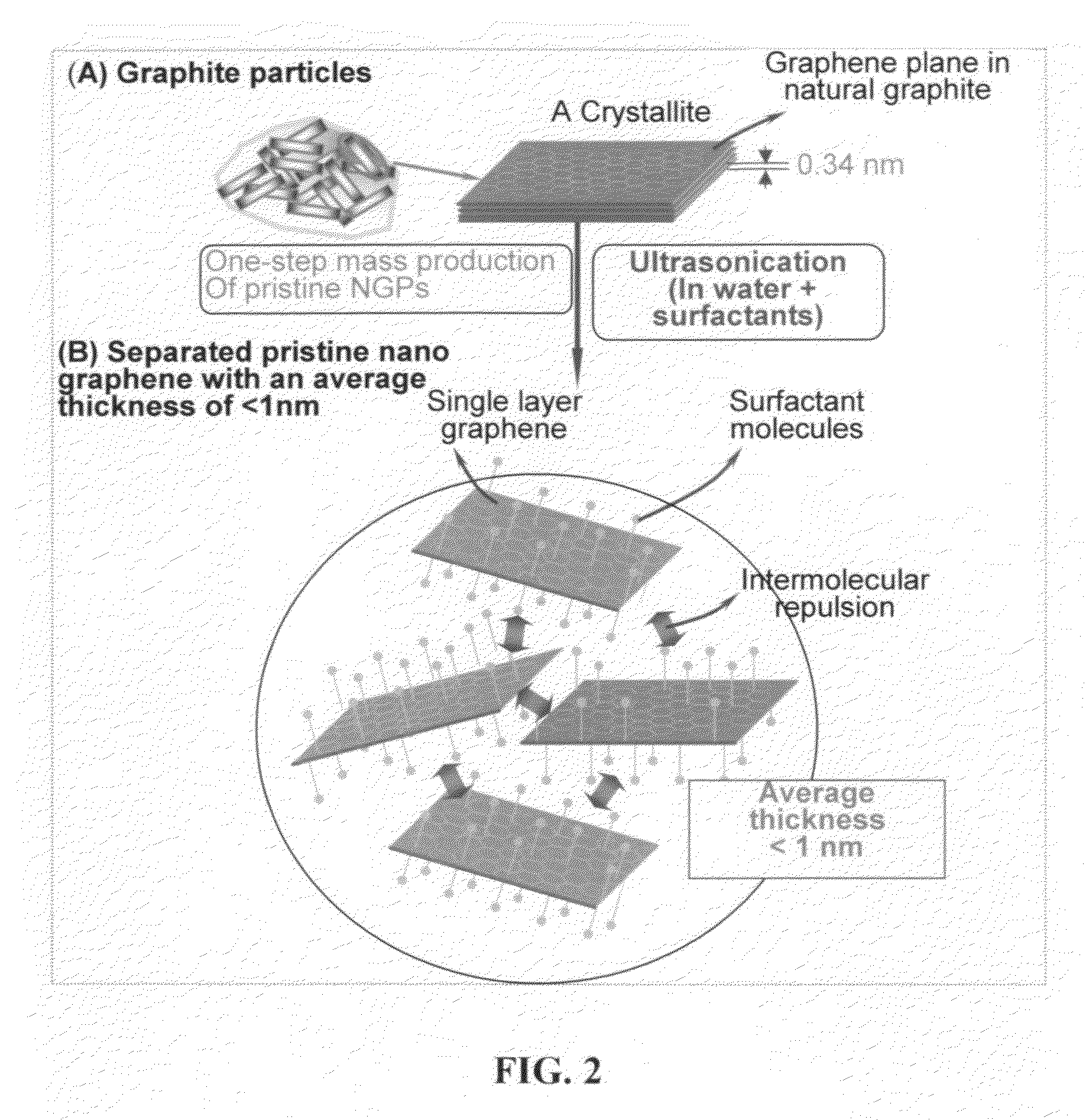Process for producing chemically functionalized nano graphene materials
a technology of nano graphene and functionalized materials, applied in chemical/physical/physical-chemical processes, energy-based chemical/physical/physical-chemical processes, organic chemistry, etc., can solve the problems of high cost of moderately priced multi-walled cnts, inability to meet the requirements of high-volume polymer composites and other functional applications, and inability to meet the requirements of large-scale production
- Summary
- Abstract
- Description
- Claims
- Application Information
AI Technical Summary
Benefits of technology
Problems solved by technology
Method used
Image
Examples
examples
Materials
[0100]Both pristine graphene and graphene oxide materials were obtained from Angstron Materials, LLC (Dayton, Ohio) and the product codes were N002N (pristine) and N002P (graphene oxide). The multi-walled carbon nanotubes (MWNTs) were purchased from (purity >95%). The single-walled carbon nanotubes (SWNTs) were acquired from Shenzhen Nanotech Port Co. (purity of CNTs>90%, purity of SWNTs>50%). Succinic anhydride (98%), stannous octoate ([CH3(CH2)3CH(C2H5)COO]2Sn, 95%), and ethylene glycol (99%) were purchased from Aldrich and used as received. 2-Bromoisobutyryl bromide (98%), N,N,N′,N″,N″-pentamethyldiethylenetriamine (PMDETA, 99%), N,N-(dimethylamino)pyridine (DMAP, 98%), and boron trifluoride diethyl etherate (BF3.OEt2, 98%) were purchased from Alfa Aesar and used as received. ε-Caprolactone (Acros, 99%) and palmitoyl chloride (Fluke, 97%) were used without further purification. Sodium azide (95%), 2-chloroethanol (99%), 3-chloropropylamine hydrochloride (98%), potassium ...
PUM
| Property | Measurement | Unit |
|---|---|---|
| plane spacing | aaaaa | aaaaa |
| distance | aaaaa | aaaaa |
| spacing | aaaaa | aaaaa |
Abstract
Description
Claims
Application Information
 Login to View More
Login to View More - R&D
- Intellectual Property
- Life Sciences
- Materials
- Tech Scout
- Unparalleled Data Quality
- Higher Quality Content
- 60% Fewer Hallucinations
Browse by: Latest US Patents, China's latest patents, Technical Efficacy Thesaurus, Application Domain, Technology Topic, Popular Technical Reports.
© 2025 PatSnap. All rights reserved.Legal|Privacy policy|Modern Slavery Act Transparency Statement|Sitemap|About US| Contact US: help@patsnap.com



